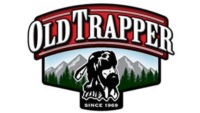On Wednesday, May 8, members of the American Association of Meat Processors participated in a bus tour of German butcher shops, as part of the 2019 IFFA in Frankfurt, Germany. The German Butchers’ Association arranged a tour for the group of 25 member plants and their guests to visit several butcher shops in the surrounding Frankfurt area. Of the visits, one particular business stood out to the members of AAMP.
Landfleischerei Koch is a butcher shop located in the central Germany town of Calden. Owner and Master Butcher Katherina Koch gave visitors a private tour of the well-known business that has been in operation since 1877, along with its famous Wilhelmsthaler “sausage heaven” attic. This is what the Koch family calls its curing rooms in the attic of the large timber-framed business, carrying on the tradition of more than 140 years ago. Last year, Katherina took over running the family business, which specializes in making Ahle Wurscht or “old sausage,” from her father, Thomas.
Built on tradition
Thomas Koch is a fourth-generation butcher who can be credited with putting Ahle Wurscht on the map, having his sausage declared the “official ambassador” of their region. Ahle Wurscht has gained much notoriety over the years due to the unique quality of the cured sausage and the determination of the Koch family to continue upholding the tradition of naturally air cured sausage that has been made in this part of central Germany for some 600 years. Thomas’ father, Henry, began making the sausage in the 1970s after researching old family and regional recipes. His goal was to create more artisan products that are not commonly found in grocery stores.
The Ahle Wurscht is unique in flavor and texture. It is firm to the touch, yet when consumed, the meat becomes loose and crumbly. For authentic Ahle Wurscht, a special type of pig must be used. According to Katherina, the pigs are grown slowly and will not be slaughtered before the age of one. She notes that pigs weighing around 300 pounds or more have better flavor and less water in the meat. With less moisture, the sausage dries and cures well. The pigs are also fed a special diet of potatoes and barley. Ahle Wurscht is traditionally made from freshly slaughtered pigs while the meat is still warm -- a practice the Koch family says gives the sausage superior taste and aroma.
Curing Process
After slaughtering, the meat is minced, finely chopped, and a variety of specialty ingredients are thrown into the mixture. Landfleischerei Koch had to challenge the European Union (EU) considerably for the right to make Ahle Wurscht with freshly slaughtered pigs. The EU eventually granted the butcher shop the ‘Protected Designation of Origin’ (PDO) status, recognizing the traditional practices of the area in which the sausage is made. Once the sausages are stuffed, next begins the process of slow curing the products by air in the attic. A typical sausage takes six to eight months, while larger ones take up to 12 months. This traditional, unhurried, process is what gives the sausage its notoriety.
The sausages all hang from the ceiling of the attic in the worschtekammer, or sausage chamber. Sausages are hung on different colored strings, and are in various stages of curing. Twice a week, employees remove the sausages for washing, and place them back after. The curing is regulated using large shuttered windows and natural, untreated clay walls. The clay walls allow moisture to be gradually lost from the room as the sausages dry out naturally, while the windows moderate humidity and temperature. The windows are opened and closed, as needed. The family, determined to remain true to traditional practices, fought EU regulations to standardize their shop with smooth washable surfaces. The production of Ahle Wurscht typically takes place during the colder months, when temperatures outside remain above freezing.
Today, Thomas Koch is still very much involved in the family business; however, Katherina is at the forefront of new business ideas, often testing out innovative flavors of sausage. With former dreams of working in a political organization, she studied in Berlin and Paris before ultimately deciding to return home to continue her family’s business that she has known since childhood. To learn more, visit www.landfleischerei-koch.de.









